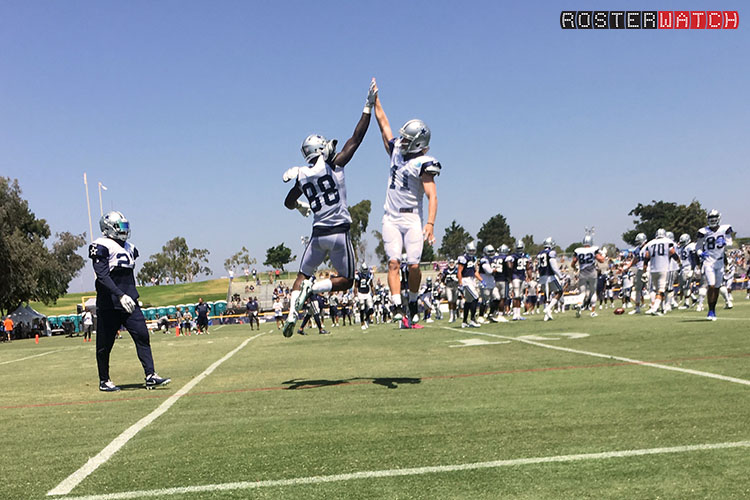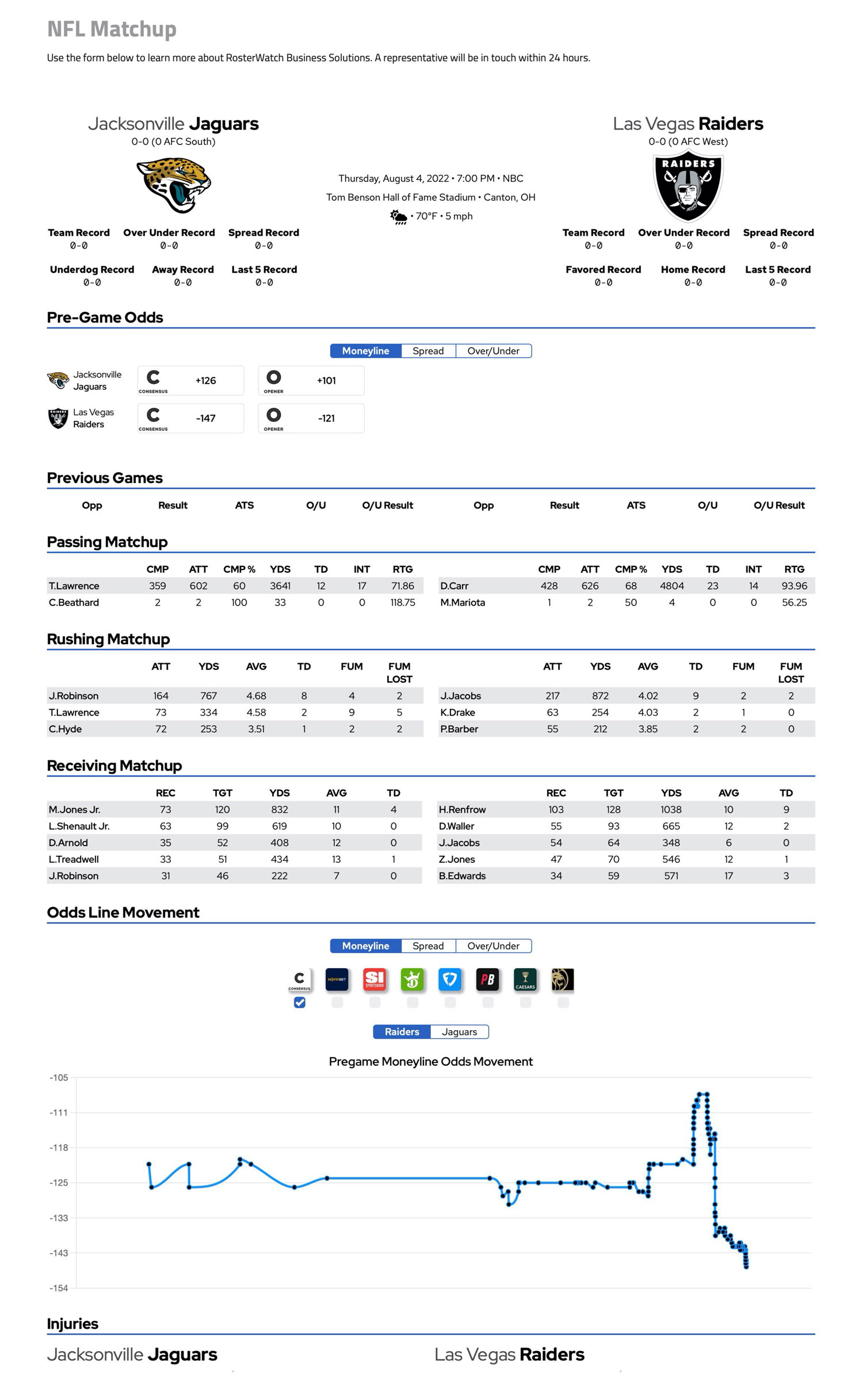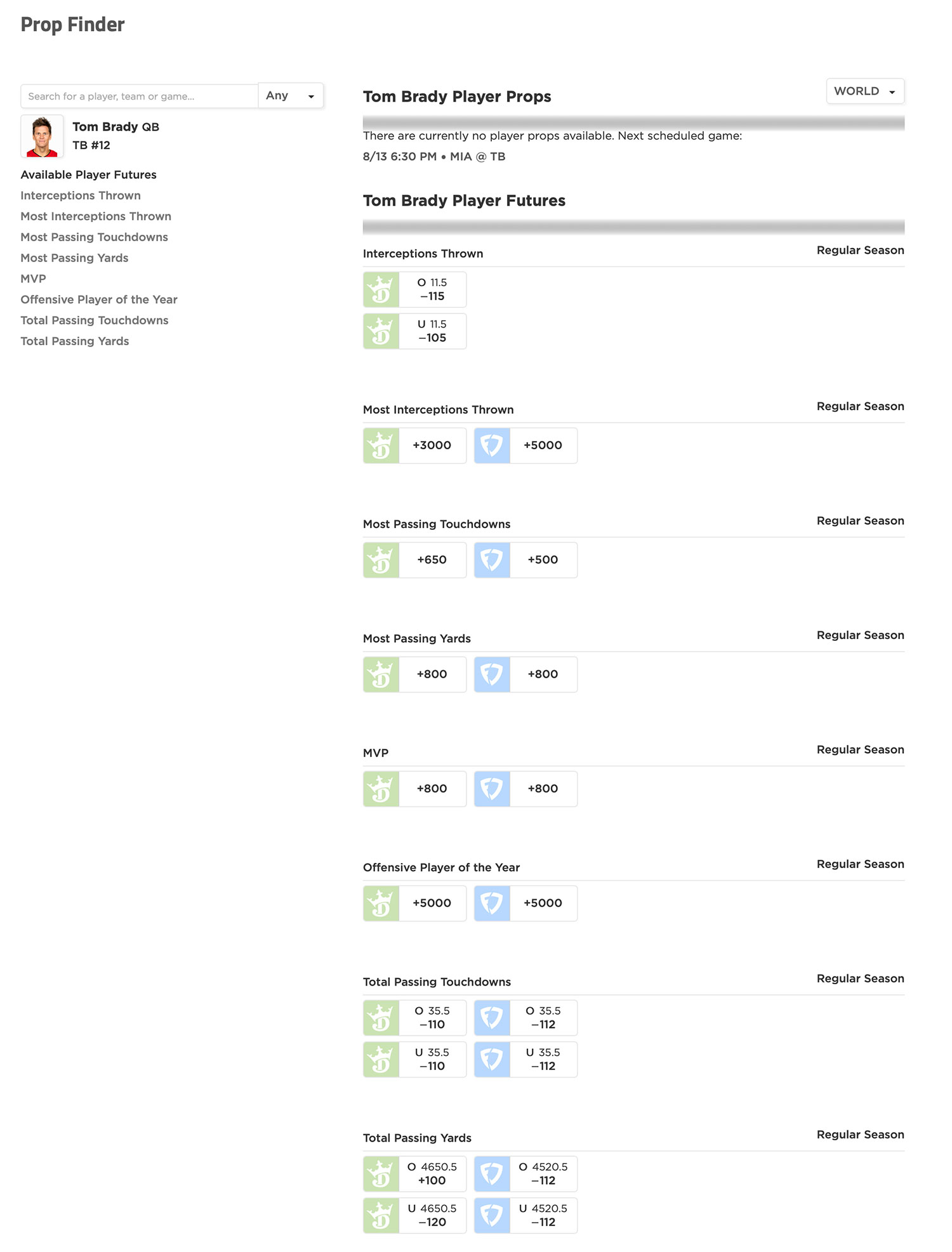
Stacking in Season-Long Leagues and Alternative Fantasy Football Strategies
 Alternative Fantasy Football Strategies
Alternative Fantasy Football Strategies
by Alan Seslowsky
RosterWatch is a year-round fantasy football intelligence service that builds proprietary tools for you to have an advantage in your leagues. Part of learning and building your fantasy football skills is making sure to interact with analysts throughout the industry. On the RosterWatch podcast #267, Mike Leone from Establish the Run joined our co-founder, Alex Dunlap. They discussed a variety of alternative fantasy football strategies. Below are a few of the highlights.
Building “Stacks” in Season Long Fantasy Football
“Stacking” is a popular strategy for DFS players. As a refresher, “Stacking” is the team-building strategy of drafting correlating roster positions on the same NFL team in order to raise your highest percentile outcome. For example, the “QB/WR stack,” could be pairing Matt Ryan with Julio Jones AND Calvin Ridley. Using July 2020 ADP, you could plausibly draft Julio anytime in the late first or early second round. Then you could draft Calvin Ridley in round three; following that up with Matt Ryan in round eight. Mike Leone and Alex Dunlap discussed using this strategy in season-long leagues. The simple idea is that if you “hit” on an offense all of those players could outperform their ADP. The conventional thinking is that you do not want to draft two WRs on the same team in order to diversify, but this strategy turns that upside down. Some stacks will be very difficult to build based on ADP. For example, a Kansas City stack with Travis Kelce, Tyreek Hill, and Patrick Mahomes does not line up with ADP in most drafts.
Examples of Affordable Stacks Are:
- Matt Stafford, D’Andre Swift, Kenny Golladay, Marvin Jones
- Tom Brady, Mike Evans, Rob Gronkowski
- Jared Goff, Cooper Kupp, Tyler Higbee
- Big Ben, James Connor, Dionte Johson, James Washington
As you can see, it is easier with the mid-tier priced players to build an effective stack. You can then use higher draft picks to allocate to other resources.
Projecting Target Share For Pass Catchers
In season-long snake drafts, your draft position will determine the grouping of players that you are going to have access to. At times this means you will be shut out of the primary option on offenses like Kansas City, Baltimore, or New Orleans. Fading the primary weapon (or most expensive player) in an offense can have an edge if we can effectively identify the underpriced asset in the offense. A couple of examples are:
Mecole Hardman vs Sammy Watkins:
Hardman was extremely efficient on limited volume during his rookie season. When teammate Sammy Watkins was healthy and on the field with Hardman, Mecole’s volume decreased to the point that he was unplayable for fantasy. It is reasonable to project an increase in targets for Hardman entering his 2nd year. Upside chasers have pushed Hardman into the 8th round, where other “boring” players that have assured target volume are also available to draft. If Hardman were to fall to the 10th round or later, that is the price point we need to cash in on that upside. Some may argue that Watkins is the better bet for more targets than Hardman, and is two rounds cheaper than Mecole. One of these later round WRs has an affordable path to be a fantasy difference-maker.
The New York Giants Pass Catchers:
Many are excited about what we saw from QB Daniel Jones in fantasy football last season. In 2020, he will have all of his weapons back healthy. The key is to identify how the targets will be split between Golden Tate, Sterling Shepard, Darius Slayton, and Evan Engram; not to mention carving out at least 75 targets for Saquon Barkley. Interestingly, Darius Slayton is the most expensive WR of the group, yet his sportsbook reception total is the lowest of the bunch. The market may be over-rating the player who stayed healthy last season. RosterWatch loves Slayton’s playmaking ability, however, we offer caution at his current 8th round ADP. The better bets maybe Golden Tate and Sterling Shepard, both who have higher reception and yardage projections, a few rounds later.







